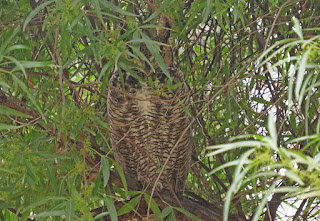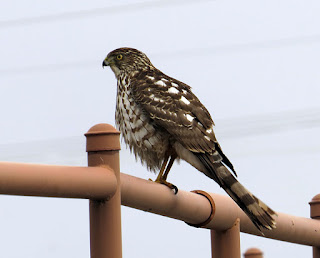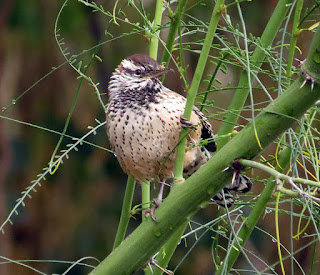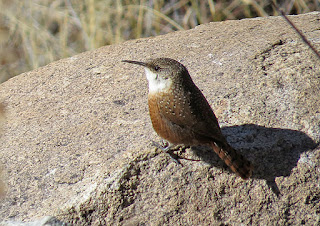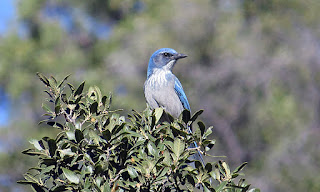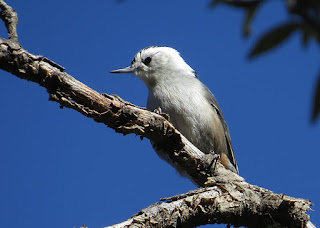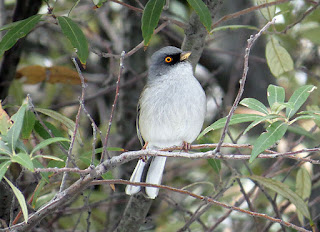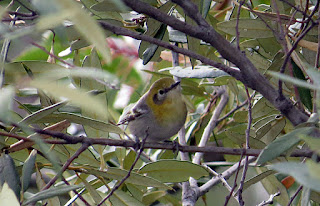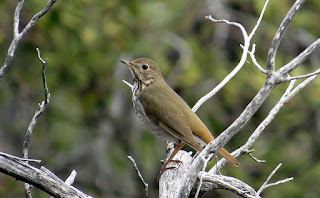On this
Christmas Eve I’ve already put together 3 pies and have everything ready to
make the next two for tomorrow’s dessert, chicken soup is on the stove for
lunch, and I’m going to start getting caught up. I’m hopelessly behind in my
blogging, thanks to a series of back-to-back tours dating to July. I still have
post-tour reports unfinished for four tours back to September, and hundreds of
photos to sort and label. I got home from my last tour, the Yucatan, already 2
½ weeks ago, but I’ve barely had a moment to rest since then. All those tours
went really well, with amazing birds and animals and really great participants.
But it doesn’t
seem that I'm catching up yet. It’s Christmas Bird Count Season after all.
So before I
get too far behind in those and post some catch-up-blogs from October onward,
here’s a quick summary (but lots of photos) from the first four CBCs I did this
past week, starting with Tucson Valley on December 14. This is the CBC that I have now compiled
for four years. This year I coordinated 122 people in 27 teams, plus six
observers contributing as feeder watchers. I had seven last-minute no-shows,
but a total of 128 is still a record high. I covered Area 10 – Omni National Golf Course
for the first time, and was joined by Greg Corman, Kelly Rishor, and Sherman
Bodner. It’s an area I didn’t know well so was happy to see what it looked like
in person in order to provide better advice to future participants. Past area
leaders have provided me with no useful information. The management at the golf
course was extremely generous in providing us with golf carts to run around and
check all the pine trees and ponds, as well as adjacent well-planted
residential areas.
The day started clear and gorgeous, about 45°F.
We had this pair of Hooded Mergansers, the only ones on the CBC.
We didn’t
see as many Vermilion Flycatchers as last year’s team, but there were plenty
around. The CBC total looks to be 311, a second-highest ever.
This tree
had a scolding Verdin and a Ruby-crowned Kinglet.
Close
inspection revealed a roosting Great Horned Owl. A very friendly resident later
approached us to tell us that there were three in the area, but we returned and
couldn’t find the others.
Then the
predicted cold front arrived. It rained for about 2 ½ hours and the temperature
dropped 10 degrees to the low 40s.
We got very
close to this Accipiter, which at the time I concluded was a Sharp-shinned, but
then from the photos I think it looks more like a Cooper’s Hawk. Not many have
those big white spots on the scapulars, but the eye placement, hint of a crest, and the leg thickness
seem better. The fluffed out belly feathers probably mask the lower belly,
which would be more heavily streaked in a Sharpie.
Cactus Wrens
continue to decline or at least have leveled off regionally, but our area today
had quite a few more than in past years.
Gavin Bieber
found this Summer Tanager at Evergreen Cemetery, and I found it the next day
feeding on honey bees (notice the comb in the lower left).
Then on December
16 I participated on the Green Valley CBC, doing the same area I’ve done for
the past three years, hiking up the Vault Mine and Carrie Nation trails to
the ridge trail that traverses the upper slopes of Mt. Hopkins. The views are
great.
This female
Cassin’s Finch was feeding on Arizona Madrone berries, as the mountain-mahogany
seemed to be void of fruits. And it was the only one we had.
It had
snowed during Monday’s storm, and with the extremely dry air behind the front,
the snow had sublimated then recondensed at the dewpoint to form some amazing,
crackling dry crystals.
My
co-participant was Ken Blankenship from Marietta, Georgia, on a winter birding
vacation in Arizona.
Lots of
animal tracks in the snow were fun to see. I guess that this one is a
White-nosed Coati.
My guess on
this one is Bobcat.
A view of
Mount Wrightson to the east.
Looking back
down Madera Canyon to the north. Notice the bajada or alluvial fan covered in
Botteri’s Sparrow habitat.
A Bewick’s
Wren
The steeper,
most northerly facing slopes don’t get much winter sun, and here the air had a
particularly bone-chilling feel. The forests here are dominated by Gambel’s
Oak and Quaking Aspen.
Another view
looking north from one of the highest points. The scrub oaks up here are home
to a very few Western (Woodhouse’s) Scrub-Jays.
Even in the
sun it wasn’t warm enough for icicles in the trees to melt.
A very
confiding Arizona Woodpecker foraging just a few feet away.
We were one
of two teams with a chance of getting Pygmy Nuthatch, and I found them in the
same place as last year.
The very
next day I participated on the Patagonia CBC, but at a much lower elevation. We
had almost no snow. This is along Duquesne Road looking westward toward
Nogales.
We had a
nice mix of open oak slopes with lots of grass and denser Madrean oak-juniper
woodland. This is one of many Sycamore Canyons in Arizona.
A stake-out
territory of Spotted Owl in this habitat was one of two on the CBC.
Here are my very capable companions Nick Beauregard and John Kugler.
This
Sycamore Canyon has very few sycamores, but it’s a gorgeous place. Just above
this location I found a male Elegant Trogon, a rare winterer here.
Even though
morning temperatures have reached the teens (but only down to about 22 today), this
monkeyflower was still blooming.
I tooted in
this Northern Pygmy-Owl (Mountain Pygmy-Owl) in upper Sycamore Canyon.
I assume
that the Spotted Owls breed in cliffs like these and just roost in
the denser oak in the canyon bottom.
Hammond’s
Flycatcher winters in small numbers in these oak canyons.
We all heard
this Whiskered Screech-Owl (responding to my whistles) from a great distance,
and I eventually found it poking its head out from its cavity.
A kettle of
45 ravens was mixed Common and Chihuahuan, offering good comparison of the size
and proportions. I heard only one of the Chihuahuans calling, but the Commons
were quite vocal.
We’re at the
very northern limit of the winter range of Townsend’s Warbler, but they’re
scarce here. We had nine, and that is a relatively high number.
Here’s a
grand view from Duquesne Road looking west towards Nogales and the Atascosa
Mountain peaks (near the center of two CBC circles away).
We had only
a couple Canyon Wrens.
Western
Scrub-Jay (Woodhouse's) is scarce here.
We tooted
and pished in a few flocks with White-breasted Nuthatch.
One pair of
Hutton’s Vireos were particularly fearless.
Bridled
Titmouse
Then on
Saturday, December 19 I did the Santa Catalina Mountains CBC, the circle that
slightly overlaps with the northeastern part of the Tucson Valley circle. My
friend Andrew Broan joined me for what promised to be a challenging
cross-country hike through a couple of never-visited canyons. With the snow,
steep slopes, and bouldery canyons, it turned out to be more then just challenging,
bordering on treacherous in places. 6.1 miles in 7 hours and 40 minutes. Here
are just a bunch of photos from the day.
Abert’s
Squirrel
Yellow-eyed
Junco
Olive
Warbler (we had two, the only ones on the CBC)
Scenery...
Hermit
Thrush
More Scenery...
Almost back!




